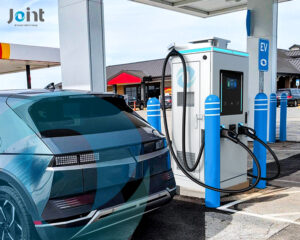
The US DC EV Charger Market: 2025 Trends and Opportunities
According to a 2024 report from Grand View Research, the U.S. EV charging infrastructure market was valued at $5.09 billion and is projected to grow at a jaw-dropping 30.3% CAGR through 2030

Fast ev charger is very important to us. Without super fast EV charger, none of these electric vehicles will go very far. So, if we want to use electric vehicles without worry, the quantity and security of fast ev charger are necessary. The freedom of the country road paves the way to new adventures. Imagine cruising the streets in your brand new electric convertible at top speed and the wind blowing all your worries away. Or imagine fleets of electric vehicles traveling hundreds of kilometers and delivering packages to every doorstep. Large and small trucks transport all kinds of products across the road. But none of these electric vehicles will go very far if they can’t be charged at fast, convenient fast EV charger stations.
Electric Vehicle (EV) battery charging stations present new potential vulnerabilities. As more heavy-duty EVs now use fast chargers, it is possible for an attacker to disrupt the electrical grid by disrupting the charging processes that are taking place.
A combined charging system (CCS) enables super-fast charging. However, the attack called Brokenwire represents a new kind of attack on the CCS. In this attack, the communication between the vehicle and the EV charger is interrupted, which leads to the termination of the charging process. If this changes the power voltage without warning, this can lead to instability of the entire power grid. Imagine if the fast charging of an entire fleet of vans were canceled at the same time. You can learn more about this Joint EVC 33 smart EV Charger

(Source: jointcharging.com)
Researchers report that switching off numerous chargers at the same time can lead to voltage instabilities that can affect the entire power grid. This could lead to power outages or even cause a fire. The scientists also found out that data can be stolen via the CCS charging system. To launch a brokenwire attack, a malicious actor can use a wireless electromagnetic jamming device from a distance of up to 47 meters, allowing it to safely operate far from the attacked charging station
To minimize this vulnerability to brokenwire attacks, the researchers suggest forcing a secure reboot of the charging system. They also recommend the same processes used in the OT Zero Trust methodology to segment networks and implement secure software patches and firmware updates. Intelligent intrusion prevention systems (IPS) and OT firewalls should be used to set up a trusted network architecture with adaptive trust lists (trust lists) that keep an eye on the situation and only allow trusted traffic between charging stations.

(Source: jointcharging.com)
Log4j vulnerabilities affect devices connected to cars, specifically EV chargers, in-vehicle infotainment systems, and digital remote controls used to open doors. V2GInjector is a malware tool designed to invade the V2G (Vehicle-to-Grid) network. It attacks electric cars and charging stations. It can also exploit a cross talk communication leak in the HomePlug Green PHY standard. By exploiting this leak, a malicious actor can launch a man-in-the-middle (MitM) attack, injecting false data in preparation for a deceptive attack.
Most likely, a malicious cyber attacker will find a way to access the EV charger via Secure Shell (SSH) or web portals, either via web vulnerabilities or via root SSH access with weak passwords [iii] . To ward off these threats, it is best to use strong SSH passwords and SSL/TLS for remote connections.

According to a 2024 report from Grand View Research, the U.S. EV charging infrastructure market was valued at $5.09 billion and is projected to grow at a jaw-dropping 30.3% CAGR through 2030

Discover 2025 electric truck charging trends and the rise of DC EV chargers, based on IEA’s Global EV Outlook 2025. Learn how high-power DC chargers support long-haul transport and sustainable logistics.

An IK10 vandal-resistant enclosure is a protective enclosure for electrical equipment designed to withstand significant physical impact as defined by the international standard IEC 62262. The IK rating measures impact resistance, with IK10 being the highest level, capable of withstanding 20 joules of force, equivalent to a 5kg object being dropped from 40cm. This makes IK10 enclosures ideal for environments prone to vandalism or accidental damage.